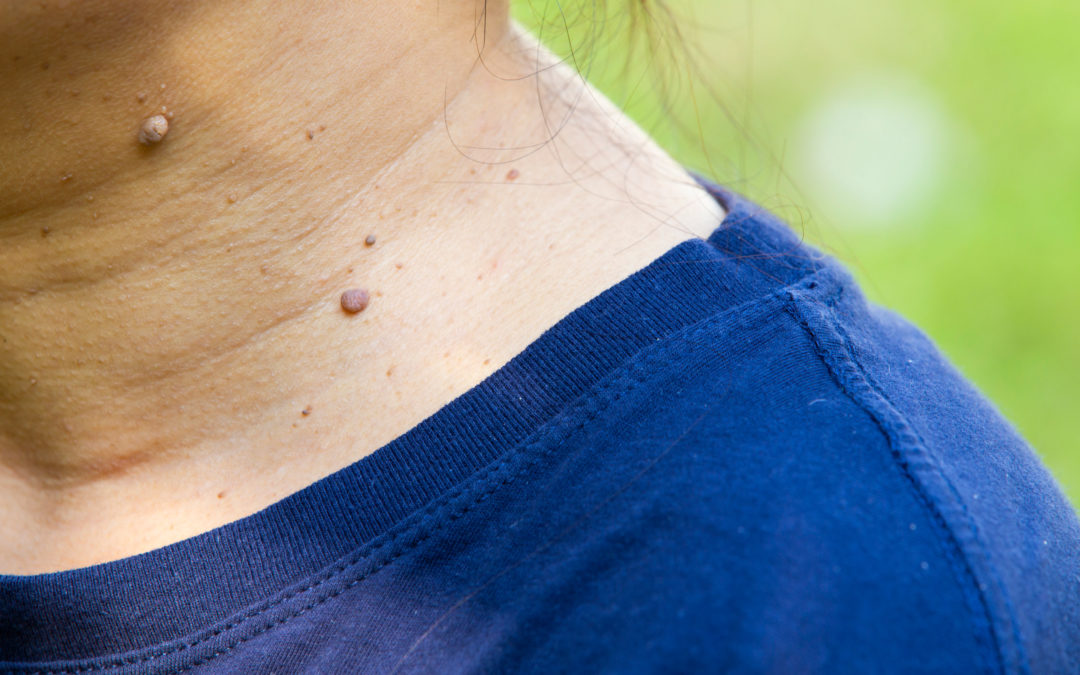Moles are very common – virtually everyone has them! Most moles develop during childhood and are benign. However, some moles that develop in adulthood are an indicator of skin cancer. This is why it’s crucial to undergo annual skin exams throughout your adult life.
If you see a new mole, or perhaps a mole that you hadn’t noticed before, you may need to get it checked to rule out skin cancer. As a general rule of thumb, any moles that develop after age 30 and/or have a different appearance from the rest of the moles on your skin, should be evaluated by a professional.
Signs That a Mole Might Be Cancerous
You can follow the ABCDEs of melanoma to check for potentially dangerous moles at home. Melanoma is a form of skin cancer that’s more likely to spread than other skin cancer types.
The ABCDEs of melanoma are:
- Asymmetry: The halves of the mole are different.
- Border: The border of the mole is irregular or blurred.
- Color: There are multiple colors within the mole, such as brown, blue, black, red, and white.
- Diameter: The mole is larger than 6 millimeters (approximately the size of a pencil eraser) in diameter.
- Evolving: The mole changes in appearance over time.
What’s Involved in a Skin Cancer Screening?
If you have a mole that needs to be checked, you can schedule a skin cancer screening. In a skin cancer screening, you’ll remove all of your clothing and change into a medical gown. Then, your doctor will ask about any moles that you’re concerned about.
Next, your doctor will check all of the skin on your body, including difficult-to-see areas like the scalp, for moles that may be cancerous. If any potentially-cancerous moles are found, your doctor can biopsy them, which involves removing most of the mole and sending it to a lab for evaluation. The results of the biopsy will indicate whether or not the mole is cancerous.
To schedule a skin cancer screening, contact The Bowman Institute today!

